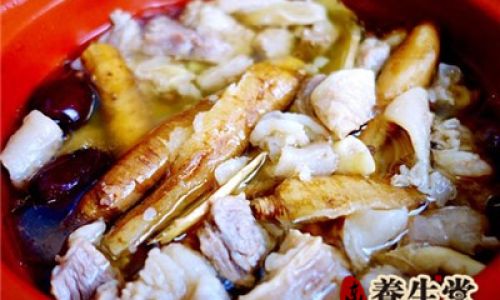Table of content
- Exposure to Oxygen and Moisture
- Temperature and Light
- Packaging and Container Integrity
- Processing Methods
- Purity and Quality
- Pantry Storage (Room Temperature)
- Refrigeration
- Freezing
- Optimal Containers
- Temperature Control
- Avoid Light Exposure
- Handle with Care
- Rotate Stock
- Shelled vs. Unshelled Almonds
- Roasted Almonds
- Almond Flour and Meal
- Almond Butter
Almonds, renowned for their rich flavor, crunchy texture, and impressive nutritional profile, have become a staple in kitchens worldwide. Whether enjoyed as a snack, incorporated into recipes, or blended into creamy almond milk, these versatile nuts are a dietary favorite. However, a common question arises: How long do almonds last before they spoil? Understanding the shelf life of almonds is crucial for avoiding waste, ensuring food safety, and maximizing their health benefits. This article explores the factors influencing almond longevity, provides storage guidelines, and offers practical tips to extend their freshness.

Understanding Almonds: A Brief Overview
Before diving into shelf life, it’s essential to clarify what almonds are. Despite often being mistaken for nuts, almonds (Prunus dulcis) are seeds from the fruit of the almond tree. Native to the Middle East and South Asia, they are now cultivated globally, with the United States, Spain, and Iran leading production. Almonds are available in various forms—raw, roasted, blanched, or flavored—and are packed with healthy fats, protein, fiber, vitamin E, and minerals like magnesium.
Factors Influencing Almond Shelf Life
The durability of almonds hinges on several interrelated factors. Mastering these variables is key to preserving their quality:
Exposure to Oxygen and Moisture
Almonds, like most nuts, contain high levels of unsaturated fats. When exposed to oxygen, these fats undergo oxidation, leading to rancidity—a process accelerated by moisture. Rancid almonds develop an off-putting taste and smell, rendering them inedible.
Temperature and Light
Heat and light are catalysts for spoilage. Storing almonds in warm, sunny environments speeds up fat breakdown and microbial growth. Conversely, cool, dark conditions slow deterioration.
Packaging and Container Integrity
The original packaging of store-bought almonds is designed to protect against external elements. Once opened, improper storage—such as leaving them in a non-airtight container—exposes almonds to humidity and pests.
Processing Methods
Raw almonds have a shorter shelf life compared to roasted or blanched varieties. Roasting reduces moisture content and kills bacteria, slightly extending longevity. However, flavored or oil-coated almonds may spoil faster due to added ingredients.
Purity and Quality
Almonds with broken shells or insect damage deteriorate rapidly. High-quality, whole almonds with intact shells last longer.
Shelf Life of Almonds: A Breakdown by Storage Method
The way you store almonds directly impacts their edible lifespan. Here’s a detailed breakdown:
Pantry Storage (Room Temperature)
- Unopened, vacuum-sealed packages: 6–12 months (if kept in a cool, dry place).
- Opened packages: 2–4 months. Once exposed to air, oxidation begins.
- Loose almonds (not in original packaging): 1–2 months. Without protective packaging, they absorb moisture and odors.
Refrigeration
- Airtight containers: 12–18 months. Cold temperatures slow fat oxidation and bacterial activity.
- Freezer bags or vacuum-sealed pouches: Up to 2 years. Freezing halts spoilage entirely.
Freezing
- Whole almonds: 2–3 years. Freezing preserves texture and flavor best when almonds are unshelled.
- Sliced or slivered almonds: 1–2 years. Exposed surfaces oxidize faster.
Signs of Spoilage: How to Tell If Almonds Have Gone Bad
Consuming rancid almonds poses health risks, including digestive issues. Recognizing spoilage early is vital:
-
Visual Cues:
- Shriveled or discolored kernels.
- Mold growth (usually fuzzy and green/black).
- Oily residue on the surface (indicates fat breakdown).
-
Olfactory Tests:
- A paint-like or bitter odor replaces the nutty aroma.
- Sour or chemical smells signal rancidity.
-
Taste Tests:

- Bitter, metallic, or soapy flavors.
- A dry, chalky texture instead of crunchiness.
Note: If almonds pass visual and olfactory checks but taste off, discard them immediately.
Prolonging Almond Freshness: Best Practices
To maximize shelf life, adopt these storage strategies:
Optimal Containers
- Use airtight containers made of glass, metal, or BPA-free plastic.
- Avoid porous materials like cardboard, which absorb moisture.
- For bulk storage, divide almonds into small portions to minimize air exposure.
Temperature Control
- Store in the coolest part of your pantry (below 70°F/21°C).
- Refrigerate or freeze almonds in humid climates or during summer.
Avoid Light Exposure
- Use opaque containers or store almonds in a dark cupboard.
- Never leave them near windows or stovetops.
Handle with Care
- Wash hands before touching almonds to prevent oil transfer.
- Use clean utensils to scoop almonds, avoiding cross-contamination.
Rotate Stock
- Practice the “first in, first out” method to use older almonds first.
- Label containers with purchase dates for easy tracking.
Special Considerations for Different Almond Forms
Almonds come in diverse forms, each with unique storage needs:
Shelled vs. Unshelled Almonds
- Shelled almonds: Last 6–12 months in the pantry (if unopened).
- Unshelled almonds: Last up to 2 years in a cool, dry place. The shell acts as a natural barrier.
Roasted Almonds
- Roasting reduces moisture, extending shelf life to 3–6 months in the pantry.
- Refrigerate or freeze for longer storage.
Almond Flour and Meal
- Highly perishable due to increased surface area. Store in the freezer for 6–12 months.
Almond Butter
- Unopened jars last 6–12 months. Once opened, refrigerate and use within 3 months.
The Science Behind Almond Spoilage
Almonds spoil primarily through two processes: rancidity and microbial growth.
-
Rancidity:
- Oxidative rancidity: Occurs when oxygen reacts with unsaturated fats, producing free radicals. This leads to off-flavors and odors.
- Hydrolytic rancidity: Caused by enzymes breaking down fats into free fatty acids, often due to moisture.
-
Microbial Growth:
- Molds like Aspergillus can produce aflatoxins, harmful carcinogens. Proper storage minimizes this risk.
Health Implications of Consuming Spoiled Almonds
While rare, eating rancid almonds can cause:
- Nausea and vomiting.
- Diarrhea.
- Headaches.
- In severe cases, liver damage (from aflatoxins).
Always err on the side of caution and discard questionable almonds.
Environmental Impact and Sustainability
Food waste is a global concern. Properly storing almonds not only saves money but also reduces your carbon footprint. Consider these eco-friendly tips:
- Buy in bulk to minimize packaging waste.
- Compost inedible almonds instead of throwing them in the trash.
- Support brands that use recyclable or biodegradable packaging.
Conclusion: Enjoy Almonds at Their Best
Almonds are a nutritional powerhouse, but their benefits hinge on freshness. By controlling storage conditions, monitoring shelf life, and recognizing spoilage signs, you can savor their crunch and flavor for months—or even years. Whether you’re a casual snacker or a gourmet chef, mastering almond preservation ensures this versatile ingredient remains a pantry staple. Remember: When in doubt, trust your senses—and when in further doubt, toss them out. Your health and taste buds will thank you.





0 comments